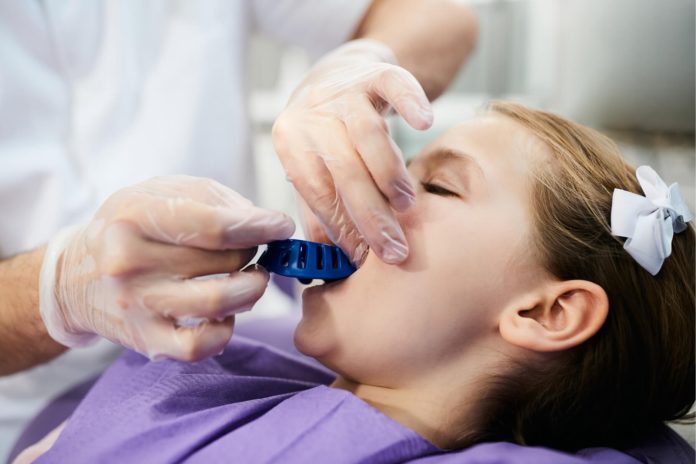Taking impressions in adults does not usually involve any particular difficulty for either the dentist or the patient, unless in exceptional cases. The same cannot be said, however, when a dentist needs to take an impression from a child, especially in the case of very small children, who can be younger than three years of age. In these cases, it is essential to minimise the patient’s anxiety and to use accessories and materials that reduce both the invasiveness and the duration of impression taking. For the reasons that will be illustrated in the paragraphs below, the dental impression alginate that Zhermack recommends for paediatric dentistry and orthodontics is Orthoprint. Let’s see why.
When it is necessary to take impressions even in small children
Impressions in children are usually required in the case of malocclusion. However, before taking impressions in very small children, orthodontists tend to wait until the first permanent molars have erupted. Impressions are therefore usually taken from six years of age.
However, there are certain special situations in which impressions have to be taken in younger children. This could be the case, for example, in children with ectodermal dysplasia associated with oligodontia or complete anodontia, requiring a prosthetic-orthodontic solution to encourage correct arch development in view of future rehabilitation.
It may also be necessary to take a dental impression on very small children in the case of labiopalatoschisis, in order to create a palatal obturator until such time as surgery can be performed. As we have seen, it may be necessary to take impressions in very young children, with all the difficulties that this can involve.
Impression taking in children
Taking an accurate and satisfactory impression in children takes more than simply choosing the most appropriate impression devices and materials. It is also necessary to ensure that the young patient’s anxiety is minimised by observing the child’s behaviour, as is emphasised repeatedly in the literature. In these cases, it is therefore the orthodontist’s responsibility to understand the patient’s anxiety status, analysing it from a psychological point of view in order to identify the most effective approaches possible. It is important not to further increase the child’s fears and, if necessary, impression taking should be postponed.
As we all know, one of the orthodontist’s main enemies in these situations is what is known as the gag reflex, which is caused by both tactile and olfactory stimulation, without forgetting the contribution also of auditory and visual stimuli. In some cases, this reaction can make impression taking completely impossible, especially when recording the upper arch. It is worth remembering that the gag reflex is a normal neurological reflex that occurs when the soft palate is touched. The patient’s response may consist in palate elevation, tongue retraction and contraction of the pharyngeal muscles, or even the contraction of the abdominal wall and uncoordinated movements of the diaphragmatic and intercostal muscles. This reaction is common amongst children and indeed it is estimated that an accentuated gag reflex is present in 28.5% of children between 4 and 12 years of age. In most cases, the cause of the gag reflex is impression-taking on the upper arch.
It is important to remember that there are many techniques for reducing anxiety and therefore the reactions that make taking impressions difficult. These strategies include pharmacological approaches, relaxation and distraction techniques, conscious sedation, desensitisation, and so on. As a general rule, it is now acknowledged that, on the contrary to the approach adopted in adults, with young patients it is always better to start the session with the less invasive procedures, before proceeding with the more uncomfortable and less tolerated ones.
Alginate for dental impressions, the best material for children
As mentioned previously, impression alginate is the most effective material for taking impressions in young patients. The information provided in the preceding paragraphs makes the reasons for this choice perfectly clear. It is an extremely fast material, which guarantees very short times for impression taking and therefore minimises patient discomfort. In addition, dental impression alginate can be scented – to offset the olfactory discomfort – and coloured, to facilitate impression taking in children.


